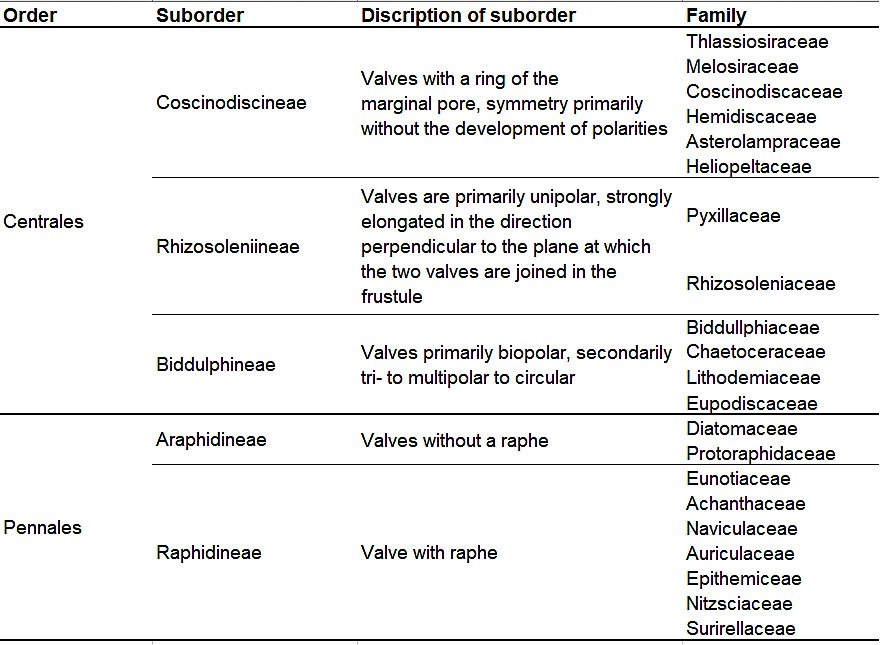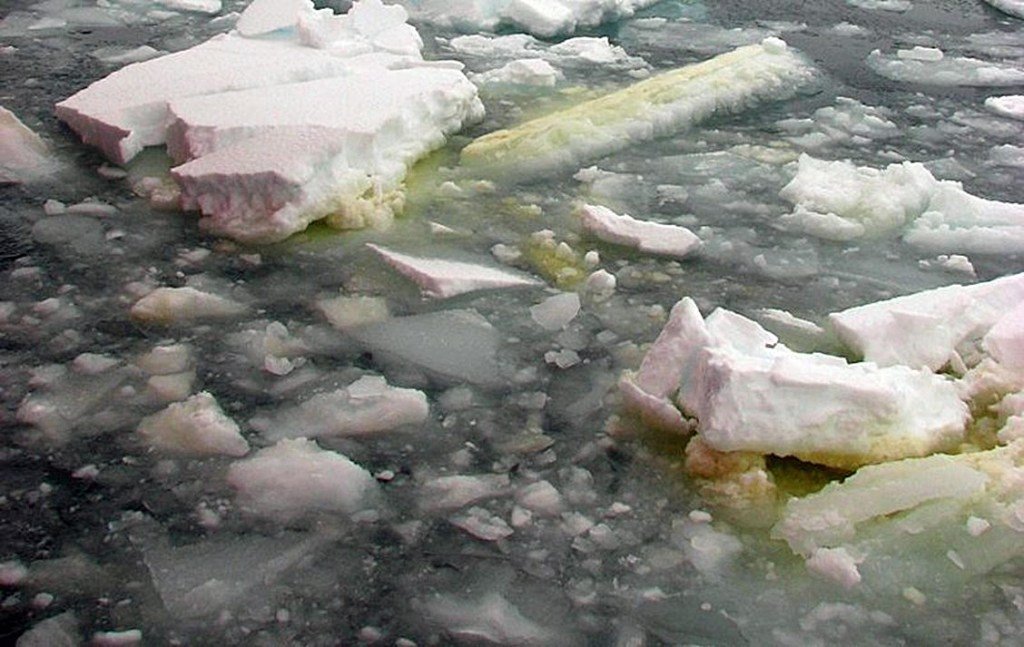Jack Wilkin (UK)
My PhD on the College of Exeter focuses on utilizing micropalaeontology and varied geochemical strategies from Holocene marine sediment cores, to attempt to learn the way the local weather of South Georgia has modified over the previous 15,000 years. One of many microfossil teams I’m utilizing to attain that is diatoms (Fig. 1).

Diatoms are microscopic algae that play an important position in marine ecosystems. They’ve round or elliptical to rod-like shapes and are perforated by minute apertures known as areola. They’re divided into two orders: the Pennales and the Centrales. Diatoms can reproduce each sexually and asexually, utilizing a singular “shrinking division” type of a sexual replica known as binary fission. They’re photosynthetic and type the idea of meals chains in lots of aquatic ecosystems. Diatoms even have a variety of geological purposes, particularly in palaeoclimate research.
What do diatoms appear to be?
Diatoms are often colonial, photosynthetic, single-celled algae, made from biogenic silica, with an estimated 20,000 to 2 million species. One might think about them as microscopic vegetation that reside inside tiny glass greenhouses, stacked on prime of one another. They type as iliceous shell, referred to as a frustule, which might vary in size from 1μm to 2000μm, relying on species, with most species falling throughout the 10μm to 100μm vary. The frustules is usually in comparison with a pillbox, because it consists of two overlapping values or thecae, with the bigger (the epitheca) becoming over the smaller one (the hypotheca) in a box-like trend, to surround the residing (protoplasmic) mass (Fig. 2).

The thecae are linked collectively by a thickened ring of silica known as a girdle band (additionally known as a copuae), and the totally different valves typically separate after loss of life. The frustules are generally round (centric) or elliptical to rod-like (pennate) in form, and this morphology types the idea of diatom classification (Fig. 3).

The frustules are perforated by minute apertures known as areola (plural areolae), which might cowl from 10% to 30% of the valve’s floor space. The form and association of the areolae are among the many most essential diagnostic traits of diatoms. The areolae are sometimes organized into strains known as striae.
Diatoms are divided into two orders: the Pennales and the Centrales, which are then subdivided into five suborders and numerous families (detailed in Fig. 2). Members of the order Pennales, the pinnate diatoms, have frustules that are elliptical or rectangular in shape, and process bilateral symmetry along the central line. In one group of pennates – the Raphidineae – this central line is comprised of a longitudinal unsilicified groove running down the middle called the raphe. The raphe allows for the flow of mucus that enables the diatom to move around.
The order Centrales (syn. Coscinodiscophyceae) have frustules that are circular, triangular or quadrate. Most Centrales are planktonic and non-motile, with all taxa lacking raphe.
Lifecycles
Diatoms can reproduce both sexually and asexually. They have a unique “shrinking division” form of asexual reproduction called ‘binary fission’. During this process, two new daughter cells form within the parent cell frustule. Each daughter cell receives one parent cell theca that becomes the overlapping epitheca valve.
Because the parent cells theca cannot expand, the daughter cells gradually get smaller and smaller with each successive generation. After enough generations, the daughter cells become so small that they cannot divide any further, so resort to sexual reproduction that “resets” the next generation to its original size (Fig. 4).

Diatomecology
Diatoms are aquatic, being found in a wide range of environments from freshwater to hypersaline, and even soils. Their habit can include bottom-dwelling (benthic), attached (epiphytic = attached to plants; epilithic = attached to stones), and free-floating (planktonic) forms.
In the sea, diatoms can be found in the intertidal zone, lagoons, shelf seas, and the open oceans (but only within approximately the top two hundred meters). The freshwater, more terrestrial and marine benthic are dominated by pennates, while the centrics tend to be more planktonic in the oceans, especially in the subpolar regions.
The cells may be single or colonial, the latter bound together by mucous filaments bands into long chains (Fig. 5).

Much of the “pond scum” you see in stagnant water and the green discolouration on icebergs (Fig. 6) are diatom colonies.

Diatoms are photosynthetic and form the basis of food chains in many aquatic ecosystems. They are the largest producers of organic matter in the ocean, supporting the ocean ecosystems and accounting for approximately one-fifth of global photosynthesis and 40% of marine primary production. Each year, these tiny plants generate about the same amount of oxygen as all the rainforests combined. Being a major primary producer, diatoms form the foundations of most marine ecosystems.
Geological history
The origin of the diatoms remains enigmatic. While molecular data indicate an origin during the Triassic or Early Jurassic (see Medlin, 2011), earliest unequivocal recorded diatom frustules are centrics from the Late Jurassic amber deposits from Thailand (Girard et al., 2020). However, they remain rare until the Late Cretaceous.
Pennates are thought to have first appeared during the Upper Cretaceous (see Harwood et al., 2007), and raphid pennates in the Palaeocene. It seems that the Mesozoic diatoms were mostly marine, with large-scale colonisation of freshwater environments occurring during the Cenozoic.
Forty six percent of diatoms survived the end-Cretaceous extinction, with planktonic genera showing substantially higher survivorship rates (50% to 90%), relative to benthic genera (10% to 40% survivorship). This high survivorship might be due to the ability of modern planktonic (but not benthic) diatom species to form resting stages.
However, modern marine diatom resting stages have not been known to remain viable for more than two years. This suggests that, if resting stages were the mechanism used by diatoms to survive the K-Pg event, the event must have had a very short effect that limited diatom proliferation.
Diatoms are very common in Cenozoic sediments. Periods of turnover in diatoms species have coincided with steps in global cooling leading to the increasing latitudinal thermal gradients through the Cenozoic. Before the Oligocene, diatom assemblages were dominated by robust species, which became progressively replaced by more finely silicified forms.
This trend continued throughout the Cenozoic and has accompanied global cooling, more vigorous circulation, and raised nutrient levels. Therefore, it seems that diatoms have adapted to the increasing competition for scarce silica in surface waters, by reducing the need for silica in their frustules and girdle bands.
Applications (geosciences)
The abundance and wide distribution of diatoms make them ideal tools for a wide range of applications in geology. Issues to overcome: Diatoms are very light, so can be easily transported hundreds of miles. Therefore, assemblages may contain some allochthonous diatoms. Another potential cause of uncertainty is the selective destruction of diatoms. Complete or partial dissolution of the frustules can occur under pressure and the less robust/more weakly silicified forms tend to dissolve in very alkaline conditions.
In such a context, the diatom assemblage would be biased towards the more robust and more heavily silicified forms. Reworked (or derived fossil) diatom frustules can sometimes be detected in samples, when some of the hypotheca seem to have been subjected to differing degrees of mechanical abrasion or dissolution. However, derived diatoms within an assemblage may be difficult to differentiate from in-situ material. Diatomaceous earth: Diatoms are so common that they can form their own sedimentary rock, called diatomaceous earth. This siliceous rock has many important economic uses including:
- acting as filtration aids (even removing radioactivity from liquid nuclear waste);
- as mild abrasives in metal polishes and toothpaste;
- for absorbency in cat litter;
- as a stabilizing component in dynamite.
Zone fossils: Diatoms have been used as zone fossils in Cretaceous and Cenozoic successions. The use of diatoms in biostratigraphy is outlined by Barron and Baldauf (1995) and Scherer et al. (2007).
Palaeoenvironmental analysis: Individual species can be extremely sensitive to physical and chemical conditions, so provide a valuable tool for studies of modern water quality and for the reconstruction of palaeoenvironments. The palaeoenvironmental and palaeoecological value of diatoms is very well established, particularly during the Cenozoic of the Arctic and Southern Oceans.
The analysis of diatoms has provided detailed insights into a wide range of palaeoenvironmental issues, such as:
- the reconstructions of changes in water levels;
- variation in water chemistry;
- temperature variations;
- sea-ice/marine-terminating glacier proximity; and
- disturbances caused by human activity.
Stable isotopes from diatoms have been used as a geochemical proxy. The δ18O values of the silica within diatom frustules have been used as an absolute palaeotemperature proxy in Quaternary deposits, although it is vital effects cannot be fully discounted (for example, Swann et al., 2007; Swann and Leng, 2009).
The δ13C diatom records have been used to model whether the Southern Ocean was a source or sink for carbon dioxide during the last glacial (for example, Jacot DesCombes et al., 2008). However, because diatoms are so small, it requires a huge amount of laboratory work to be able to extract stable isotope data from them.
Final thoughts
I like diatoms – they are one of the most interesting and beautiful type of microfossils to study. And their fossils have been so important for reconstructing Cenozoic climate change; and in the Arctic and Southern oceans, diatoms are often the only microfossils abundant enough to use as a palaeoclimate proxy. Today, diatoms produce more oxygen than all the rainforests combined, forming the foundations of entire ecosystems. They are the unsung heroes of life on Earth and their protection is paramount for the survival of entire ecosystems.
Further reading and references
Armbrust, E.V. (2009) The life of diatoms in the world’s oceans. Nature 459: 185-192: https://www.nature.com/articles/nature08057.
Armstrong, H.A. and Brasier, M.D. (2005) Microfossils (2nd ed.) Blackwell Publishing, Oxford. Barron, J. and Baldauf, J. (1995) Cenozoic marine diatom biostratigraphy and applications to palaeoclimatology and paleoceanography. Short Courses in Paleontology 8: 107-118: https://doi.org/10.1017/S2475263000001446.
Girard, V. et al. (2020) Thai amber: insights into early diatom history. BSGF – Earth Sciences Bulletin 191(23): https://doi.org/10.1051/bsgf/2020028.
Harwood, D.M. et al. (2007) Cretaceous records of diatom evolution, radiation, and expansion. Paleontological Society Papers 13: 33-59: https://www.cambridge.org/core/journals/the-paleontological-society-papers/article/abs/cretaceous-records-of-diatom-evolution-radiation-and-expansion/893A75A1319567566873DE9B75AF2BC3.
Hasle, G.R. and Syvertsen, E.E. (1996) Marine diatoms. In Tomas, C.R. (ed) Identifying marine diatoms and dinoflagellates. Academic Press, New York: 5-386.
Jacot DesCombes, H. et al. (2008) Diatom δ13C,δ15N, and C/N since the Last Glacial Maximum in the Southern Ocean: Potential impact of Species Composition. Paleoceanography and Paleoclimatology 23(4): https://agupubs.onlinelibrary.wiley.com/doi/full/10.1029/2008PA001589.
Medlin, L.K. (2011) A review of the evolution of the diatoms from the origin of the lineage to their populations. In Seckbach, J. and Kociolek, J.P. (eds) The diatom world. Dordrecht, Springer: 95-118: https://doi.org/10.1007/978-94-007-1327-7_4.
Scherer, R. et al. (2007) Methods and applications of Cenozoic marine diatom biostratigraphy. The Paleontological Society Papers 13: 61-83: https://www.cambridge.org/core/journals/the-paleontological-society-papers/article/abs/methods-and-applications-of-cenozoic-marine-diatom-biostratigraphy/99A548A884088FD1E610A84D2BCECCF2.
Swann, G.E.A. et al. (2007) Diatom oxygen isotopes: Evidence of a species effect in the sediment record. Geochemistry, Geophysics, Geosystems 8(6): https://agupubs.onlinelibrary.wiley.com/doi/full/10.1029/2006GC001535.
Swann, G.E.A. and Leng, M.J. (2009) A review of diatom δ18O in palaeoceanography. Quaternary Science Reviews 28(5-6): 384-398: https://www.sciencedirect.com/science/article/abs/pii/S0277379108003284?via%3Dihub. Theriot, E.C. (2012) Diatoms. eLS: https://onlinelibrary.wiley.com/doi/10.1002/9780470015902.a0000330.pub2
Trending Products










